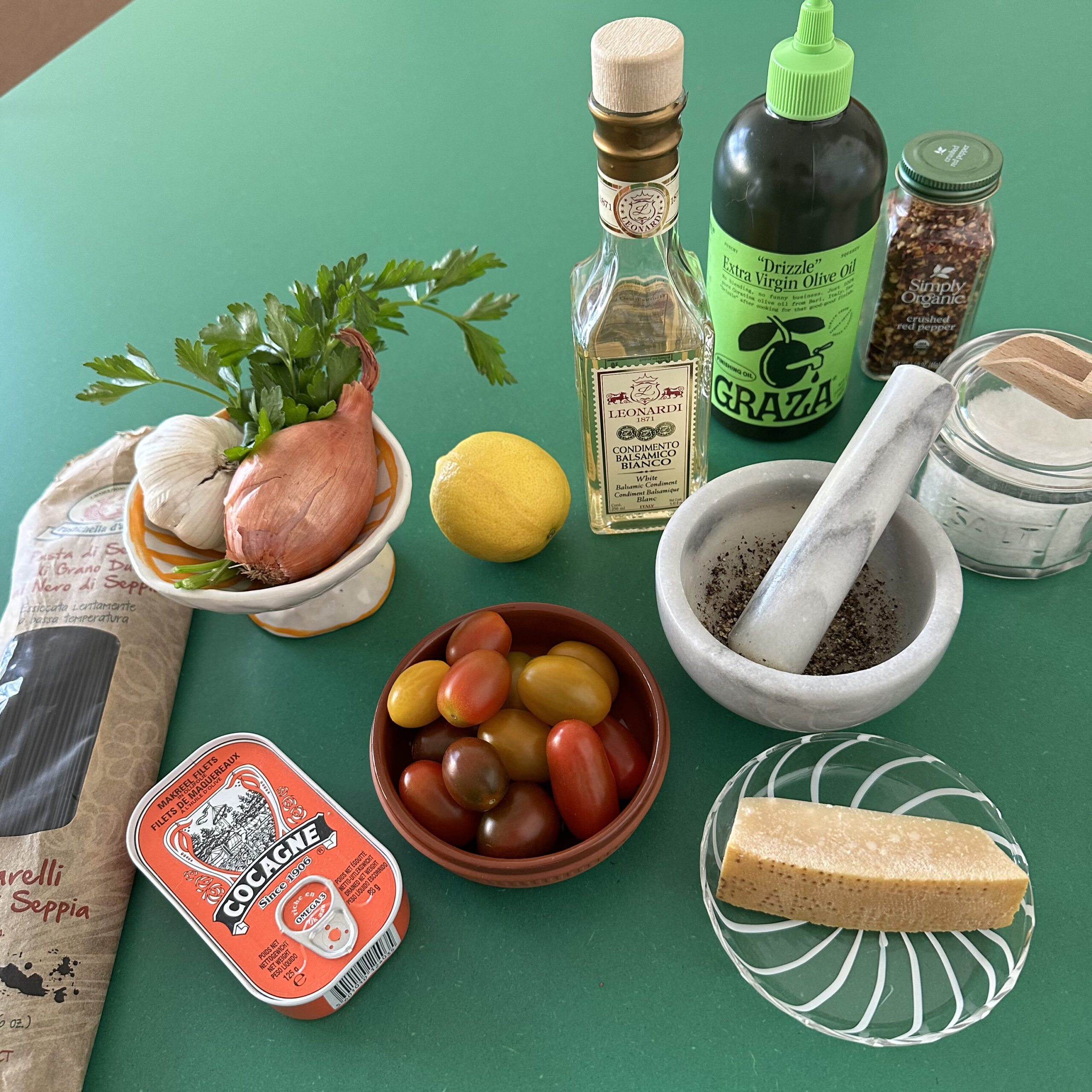Houston Ballet demi-soloist Chae Eun Yang has always loved going out to eat. When restaurants closed during the pandemic, Yang’s fiancé, Houston Ballet principal Connor Walsh, gave her a subscription to Bon Appétit. “I found my passion for cooking,” she says.
Yang, who originally hails from South Korea, continues to find new sources of inspiration while traveling with Walsh. She loves mixing Eastern and Western flavors. Her kitchen repertoire currently includes Thai curries, Japanese oyakodon (a chicken and egg dish), and Korean stir-fries.

Yang discovered artisan tinned fish at her favorite gourmet grocery store, Houston’s Central Market. She fell for the beautiful packaging first, and the contents second. “I was like, ‘I’d love to have these at home as part of the décor,’ ” she says. “There are vintage-looking ones, and sometimes I splurge on fancy ones.” (Her favorite brands are Fishwife, Berthe, La Barca, and José Gourmet.) Yang developed her pasta dish from there, explaining that the balance of carbs, protein, and healthy fats from omega-3s make it the perfect post-performance meal: “Even if it’s really late, and my legs are so sore I cannot walk one more step, the act of creating something really energizes me.”
Fresh Herb Fanatic
If there’s one food Yang can’t live without, it’s fresh chives. “I use them every morning for breakfast, on eggs or salad,” she says. Yang loves topping dishes with fresh herbs and keeps a selection in the fridge, ready to go. “I usually also have cilantro and dill,” she says, adding that if you don’t have parsley on hand for her pasta recipe, you can substitute basil.
Yang’s Secret Ingredient
Yang loves white balsamic vinegar for its balance of sweetness and tartness. “It deepens flavors,” she says. She uses it in salad dressing, and in sauces for baked chicken and vegetables. An added advantage? Unlike regular balsamic, it doesn’t change the color of a dish.
Ingredients (Serves 2)
- 160 g dried spaghetti (This amounts to a little over one-third of a standard-sized package. Yang used squid ink pasta here, but often makes the dish with regular spaghetti.)
- sea salt, to taste
- 2 tbsps olive oil
- 1 tin of sardines or mackerel fillets in olive oil (“I love both, but if you’re new to tinned fish, go with mackerel,” suggests Yang, noting that sardines have a fishier taste, and more small bones.)
- 1 small shallot, diced
- 1/2 pint cherry tomatoes, sliced in half lengthwise (Yang likes to leave a couple of them whole. “It’s fun popping them in your mouth,” she says.)
- 1 garlic clove, crushed with the side of a knife, peeled, then roughly chopped
- 1/2 tbsp white balsamic vinegar
- crushed-red-pepper flakes, to taste
- freshly ground black pepper, to taste
- ground parmesan, to taste
- zest and juice of 1/4 lemon
- flat-leaf parsley, chopped, to garnish

Instructions
- Boil water for the pasta in a heavy bottomed pot, and salt heavily. (“I never measure, but you should add a lot more than you think,” says Yang. “The water should be salty.”) Cook the pasta according to the package instructions. When done, drain the pasta, reserving 1/2 cup pasta water.
- While the pasta is cooking, heat the olive oil in a large pan over medium heat. Add a little oil from the tinned fish if you prefer a fishier taste, then drain off the remainder and set the fish aside.
- Add the diced shallot and stir for 1 minute.
- Add the cherry tomatoes and chopped garlic. Stir gently until the tomatoes soften and begin to release their juices.
- Add the white balsamic vinegar and red pepper flakes, and stir to combine.
- Add the drained pasta and reserved pasta water, and stir until the sauce looks glossy.
- Add the drained tinned fish, and mix well to break up. (“I like my fish pretty chunky,” says Yang.) Remove the pan from the heat.
- Taste, and flavor with freshly ground pepper and ground parmesan. Just before serving, top with fresh lemon zest and juice and chopped flat-leaf parsley


